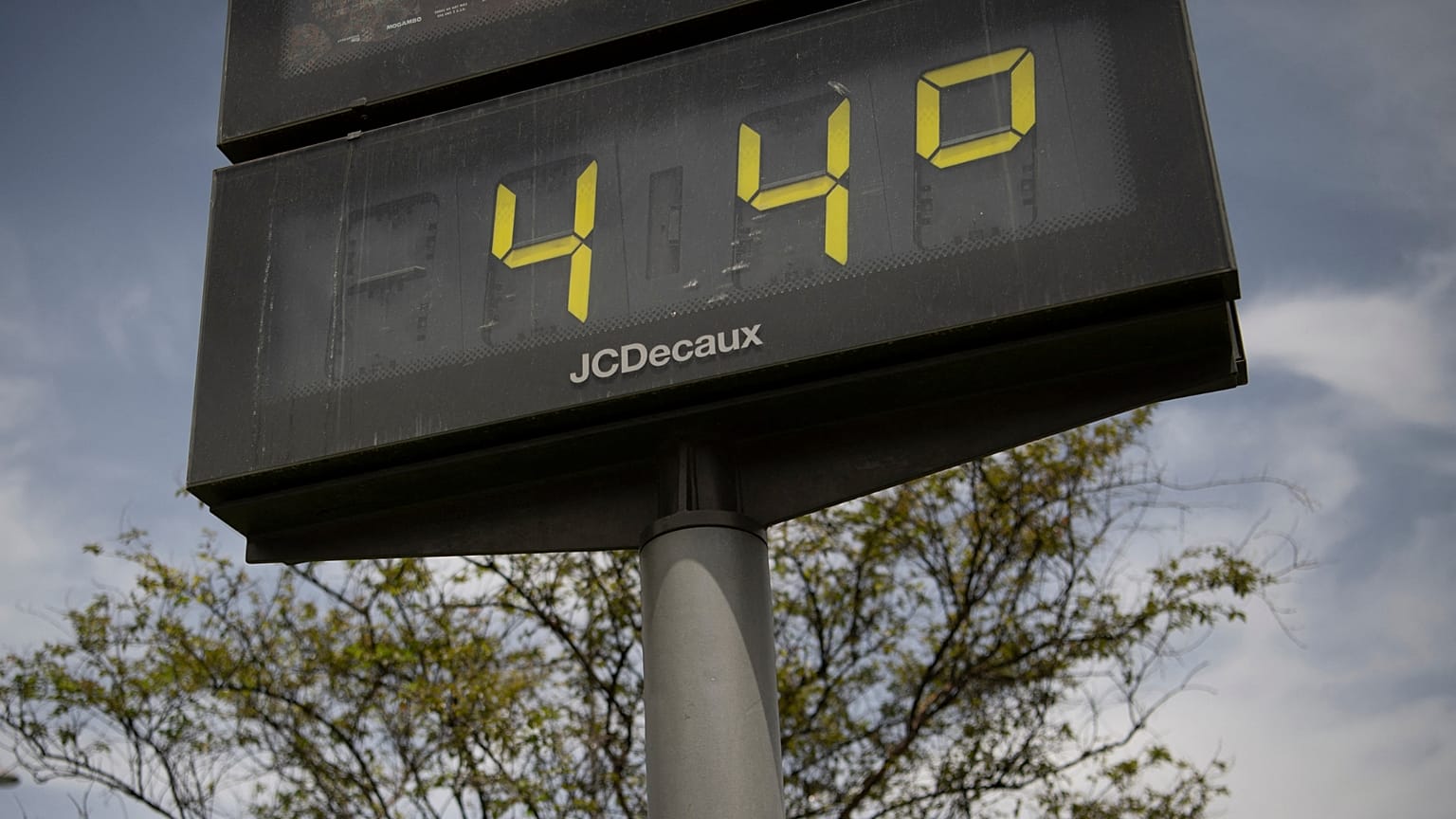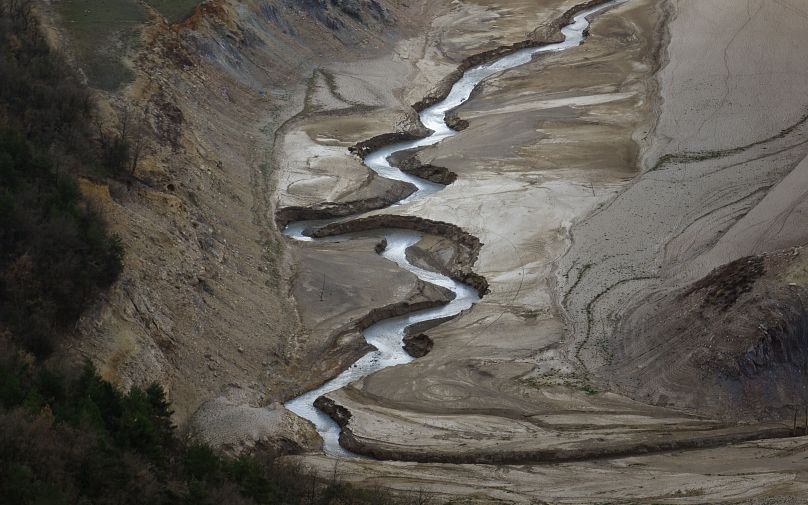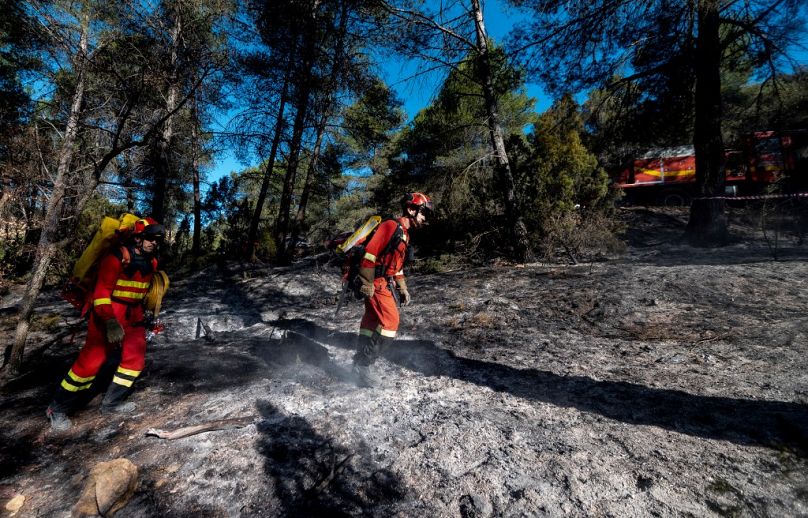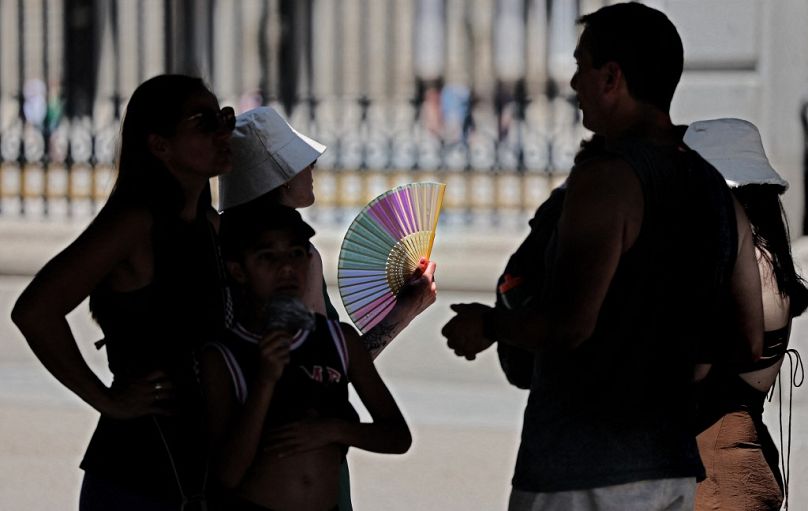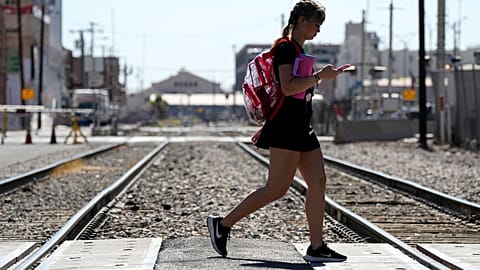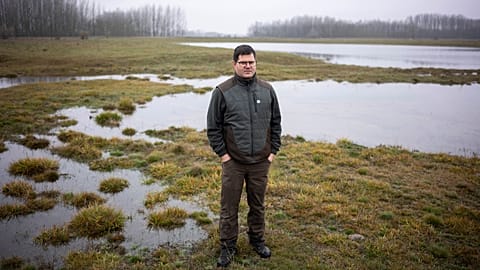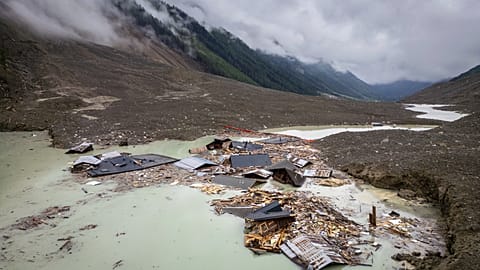For every degree of global warming, Spain’s climate warms by 1.5℃.
Spain is already experiencing severe impacts from climate change, a new report from Greenpeace reveals.
Published today (5 July) by the organisation’s Science Unit at the University of Exeter, it outlines what the climate crisis could do to the country.
“Projections indicate that if Spain does not cut severely the emissions that cause global warming, the country will become hotter, drier, more arid and flammable,” says Maria José Caballero, Unit Head of Rapid Response at Greenpeace Spain.
“It will experience more floods and high-intensity fires and the impacts of sea-level rise. The data in the report shows the urgency of cutting emissions and tackling the climate crisis by taking ambitious measures, to which all political parties must commit.”
How quickly is Spain heating up?
For every degree of global warming, Spain sees 1.5℃, according to the report. The effect is even more pronounced in inland areas of the country.
Spain is expected to reach 2℃ of warming within the next 20 years unless immediate and severe cuts are made to global greenhouse gas emissions. In the worst-case emissions scenario, this warming could reach 4℃ by the end of the 21st century.
Even with emissions cuts, the climate in Spain is expected to get warmer. The rate of warming is and will continue to be faster than the global average with widespread impact on people’s lives, Greenpeace notes.
The Mediterranean Sea is heating up too. Surface temperatures are expected to rise by between 1.8℃ and 3.5℃ by 2100.
Though gradual climate-related changes to ecosystems may be less ‘visible’, they are “no less serious than the catastrophic events,” says Paul Johnston, Head of the Greenpeace Science Unit at Exeter University.
“They affect everything from agriculture to marine resources to human health.”
Will climate change cause water shortages?
Declining rainfall is already a problem in Spain but droughts will be 10 times worse than those experienced today, the report says. If temperatures reach 2℃ of warming, it could mean over a third of the population in southern Europe will experience water scarcity. This doubles if warming reaches 3℃.
“Changes to precipitation and to agricultural and human needs for water will probably result in water shortages,” Johnston explains.
“Groundwater resources will not be fully recharged, resulting in increasing restrictions on use. River flows are likely to be lower than in the past in certain seasons, again leading to shortages.”
And, he adds, as water levels in soil decrease due to drier conditions, agriculture will become increasingly challenging.
Even when rain does fall, it is likely to be more extreme. The volume of rain on Spain’s wettest day is set to increase by 10 per cent. With that comes an increased risk of flooding, something the country already experienced during downpours this June.
How is climate change affecting people in Spain?
Extreme temperatures are already impacting people in Spain. In 2022, the World Health Organisation (WHO) estimates that heat stress contributed to more than 4,000 excess deaths in the country.
As climate change brings more heatwaves and extremely hot and humid days the risk of death from hyperthermia will significantly increase too. Mortality rates are higher during heat waves that last more than two days with vulnerable groups like infants and the elderly particularly threatened.
If Europe reaches 3℃ of warming, the number of people at high risk of death from hot weather triples when compared to the Paris Agreement limit of 1.5℃.
It isn’t just health either. High temperatures make it impossible to work during the hottest part of the day. The report notes that extreme heat could result in the loss of at least 15 per cent of working hours in most places and up to 50 per cent in the regions most affected by climate change.
Financial losses in Spain due to heatwaves could amount to 3 per cent of the country’s gross domestic product by 2060, the report says.
Last year more than 300,000 hectares of land in Spain were burnt by wildfires, according to the European Forest Fire Information System. As the country becomes hotter and drier with less defined seasons, the fire season will get longer and blazes could become more dangerous and uncontrollable.
Where in Spain is seeing the worst effects of climate change?
More than a third of people in the Mediterranean live in coastal regions compared to the global average of 10 per cent.
But Spain’s coastal cities, such as Barcelona, are likely to be the most intensely affected by climate change and the risks of extreme weather.
Built-up areas experience something called the ‘urban heat island’ effect where pavements, buildings and other surfaces absorb and retain heat. In Barcelona, research shows that makes the average night-time air temperature around 2℃ higher than outside the city.
Higher sea temperatures also leave these coastal cities threatened by more winter storms and summer heatwaves.
Rising sea levels too pose a threat with the Canary Islands at risk of losing 80 per cent of their beaches to the sea by the end of the century.
Can Spain adapt to its changing climate?
To avoid the worst impacts of climate change and biodiversity loss, Greenpeace says the EU needs to reduce net greenhouse gas emissions to zero by 2040.
“Many of the challenges that Spain faces are shared by other European countries and indeed nations globally, although the specifics will obviously vary,” Johnston says. He hopes the report can act as a template for other countries to look at their own specific climate change impacts.
In Spain, Greenpeace is calling for a 55 per cent reduction in emissions and a 100 per cent renewable energy system by 2030.
But, as the country is already experiencing severe impacts from climate change, adaptation is also essential to minimise the damage Spain can no longer avoid.
Greenpeace says a properly funded national adaptation plan against the threats of climate change is needed. Water consumption must be reduced and fire prevention efforts funded. The campaign network says the protection and recovery of ecosystems also needs to be expanded.
Johnston says, however, that as with all adaptation strategies, there is a limit to their effectiveness.
“Once tolerance limits or tipping points are reached then any changes could prove irreversible, even with mitigation strategies in place.
“The key to success is to take early and serious action to halt climate change as fast as possible.”















